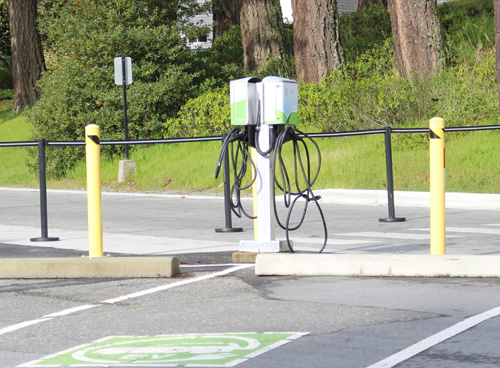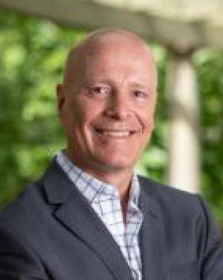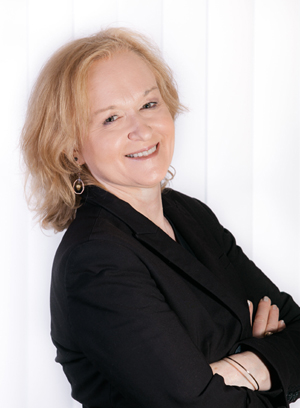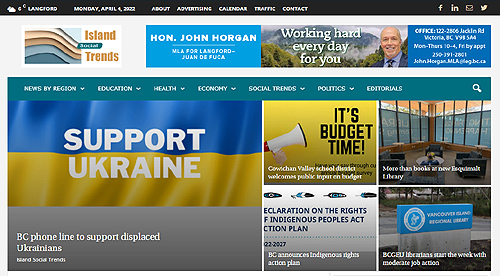
Monday April 11, 2022 | COLWOOD, BC
by Mary P Brooke, Editor | Island Social Trends
Today on a bright cool sunny morning in Colwood, Prime Minster Justin Trudeau was out selling the electric vehicle component of Budget 2022.
The budget was presented by Deputy Prime Minister Chrystia Freeland last Thursday in the House of Commons. There is no worry for the government to hold power, as the Supply & Confidence agreement with the NDP essentially ensures they can move forward with their agenda.

Switching to EV:
Moving forward with electric vehicle (EV) manufacturer and use in Canada is a program that will be spread out over several years. The sheer magnitude and detailed complexity of the project — even at full steam — will take time.
Part of the promise is a sales target of light-duty electric vehicle sales (zero-emission vehicles or ZEV’s) being 20 percent of vehicle purchases by 2026 — that’s just four years from now. By 2030 the goal is to see 60 percent of sales being EV. by 2035 the aim is to see 100 percent of vehicle sales being EV.
The transition in vehicle choice by consumers will be aided by an up-front discount at point of sale, on cars, vans, trucks and SUVs. The federal government has offered purchase incentives of up to $5,000 for eligible vehicles since 2019.
The federal government will provide $1.7 billion over five years, starting in 2022-23, with $0.8 million in remaining amortization, to Transport Canada to extend the Incentives for Zero-Emission Vehicles (iZEV) program until March 2025.
To reduce emissions from medium- and heavy-duty vehicles (MHDVs), the federal government will aim to achieve 35 per cent of total MHDV sales being ZEVs by 2030.
National charging network:
As well, the other impediment to increasing EV sales to date has been the modest availability of EV charging stations. Today Trudeau emphasized that the federal budget includes funding to establish a national network of chargers.
Since 2015, the federal government has helped build almost 1,500 charging stations across the country. As more and more Canadians adopt zero-emission vehicles, there is a need to build the charging infrastructure that drivers can rely on, no matter where they’re going.
Budget 2022 announced that the Canada Infrastructure Bank will invest $500 million in large-scale urban and commercial ZEV charging and refuelling infrastructure. Funding will be sourced from the Canada Infrastructure Bank’s existing resources under its green infrastructure investment priority area.
Budget 2022 proposes to provide $400 million over five years, starting in 2022-23, to Natural Resources Canada to fund the deployment of ZEV charging infrastructure in sub-urban and remote communities through the Zero-Emission Vehicle Infrastructure Program (ZEVIP).
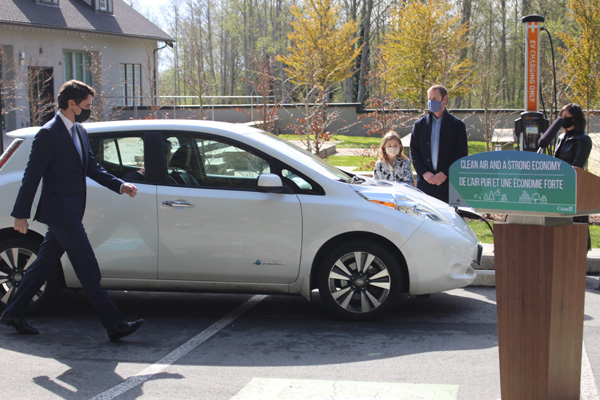
Natural resources:
Further to the EV transition is shoring up Canada’s natural resource management to better provide the resources that are used in production of those all-important batteries that will be in every EV.
Battery minerals include lithium, nickel, cobalt, graphite, manganese, alumina, tin, tantalum, magnesium and vanadium.
Royal Roads campus:
Today’s event on the Royal Roads University (RRU) campus was situated alongside some vehicle chargers. The prime minister also had two electric vehicles flanking his position at the podium.
A family that has purchased an EV chatted with Trudeau ahead of his remarks at the podium, saying they have no problems with the vehicle and that they save on fuel costs.
Today’s outdoor media event was attended by RRU President Philip Steenkamp and many RRU staff. There were no provincial or municipal elected representatives at today’s event. Though after the event Trudeau headed downtown to meet with City of Victoria Mayor Lisa Helps.
===== LINKS:
Federal Budget 2022 (PDF)
Battery minerals for the clean energy transition (Earthworks.org)
===== ABOUT THE WRITER:
Island Social Trends Editor Mary P Brooke, B.Sc., Cert PR. has been writing about socioeconomic issues on the west shore of south Vancouver Island since 2008.
Her publication was first called MapleLine Magazine (2008-2010), then morphed into the print weekly Sooke Voice News (2011-2013), then into the weekly print and PDF format West Shore Voice News (2014-2020) before emerging as a full online news portal in mid-2020.
Island Social Trends offers a journalism scholarship to graduating students in the west shore.



